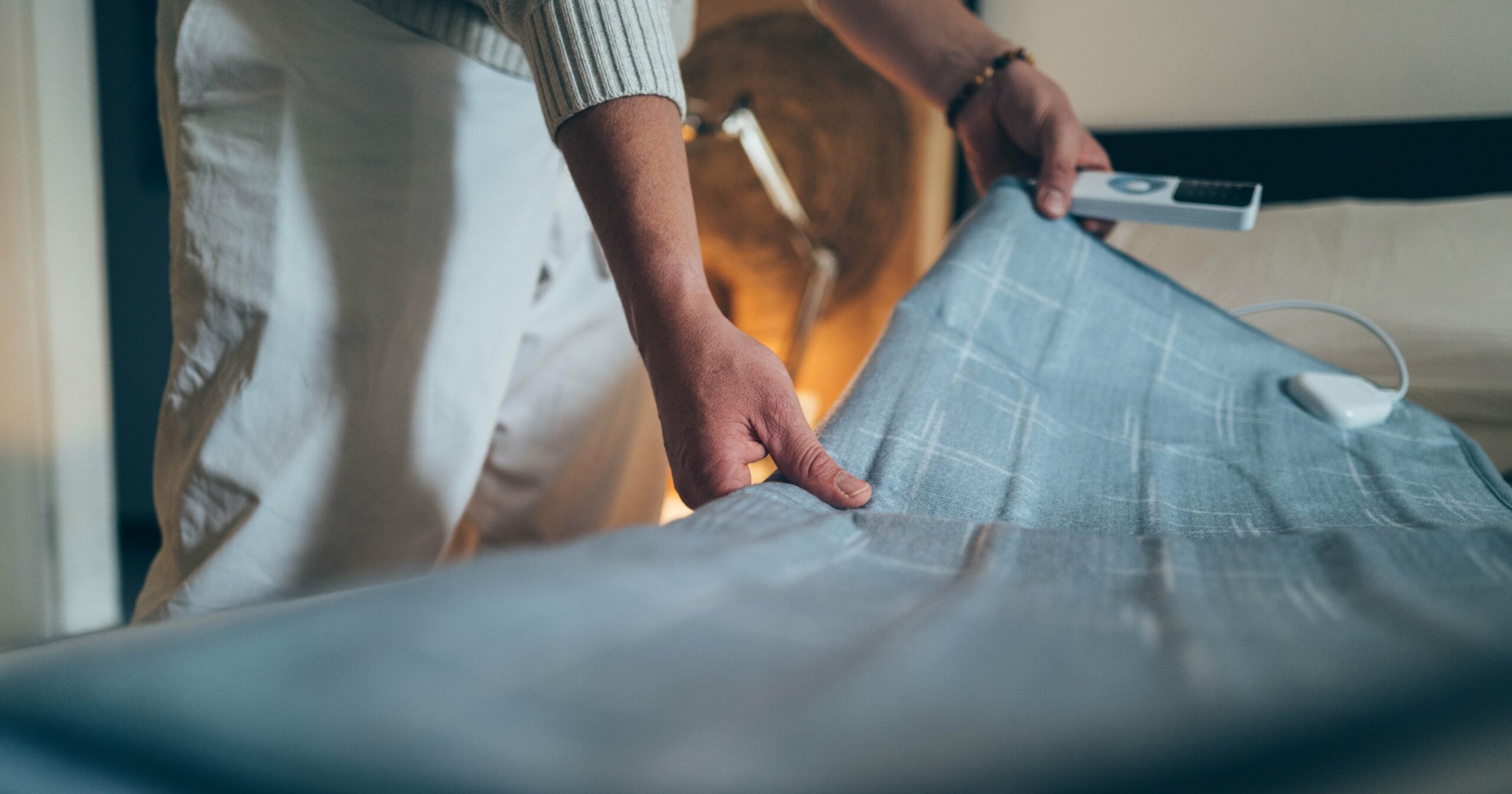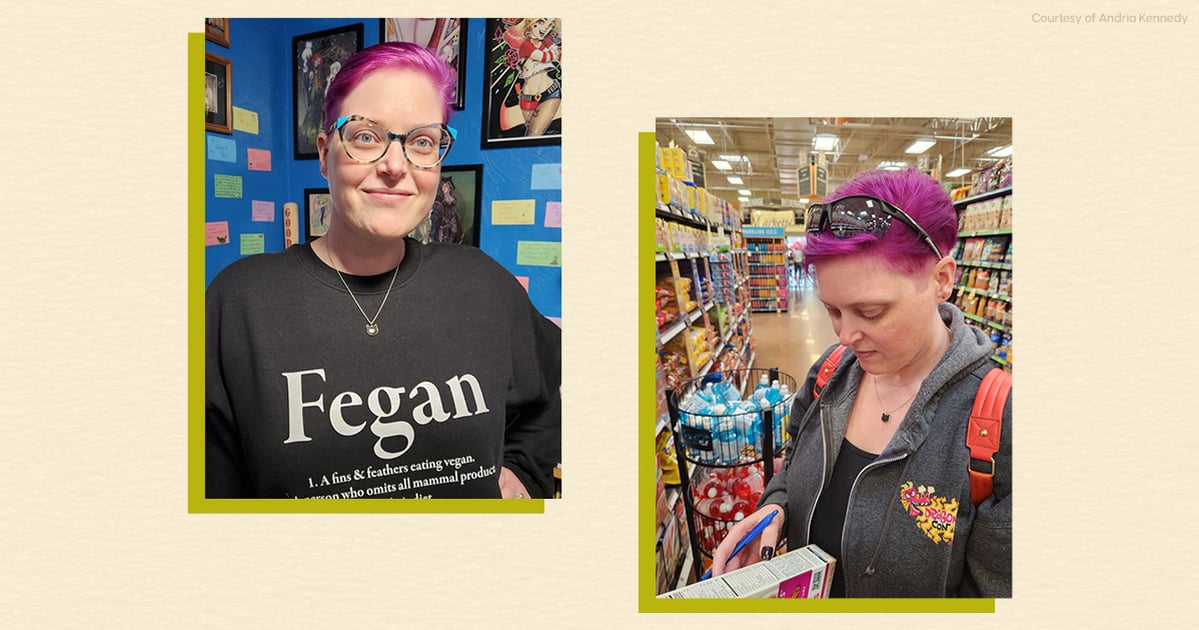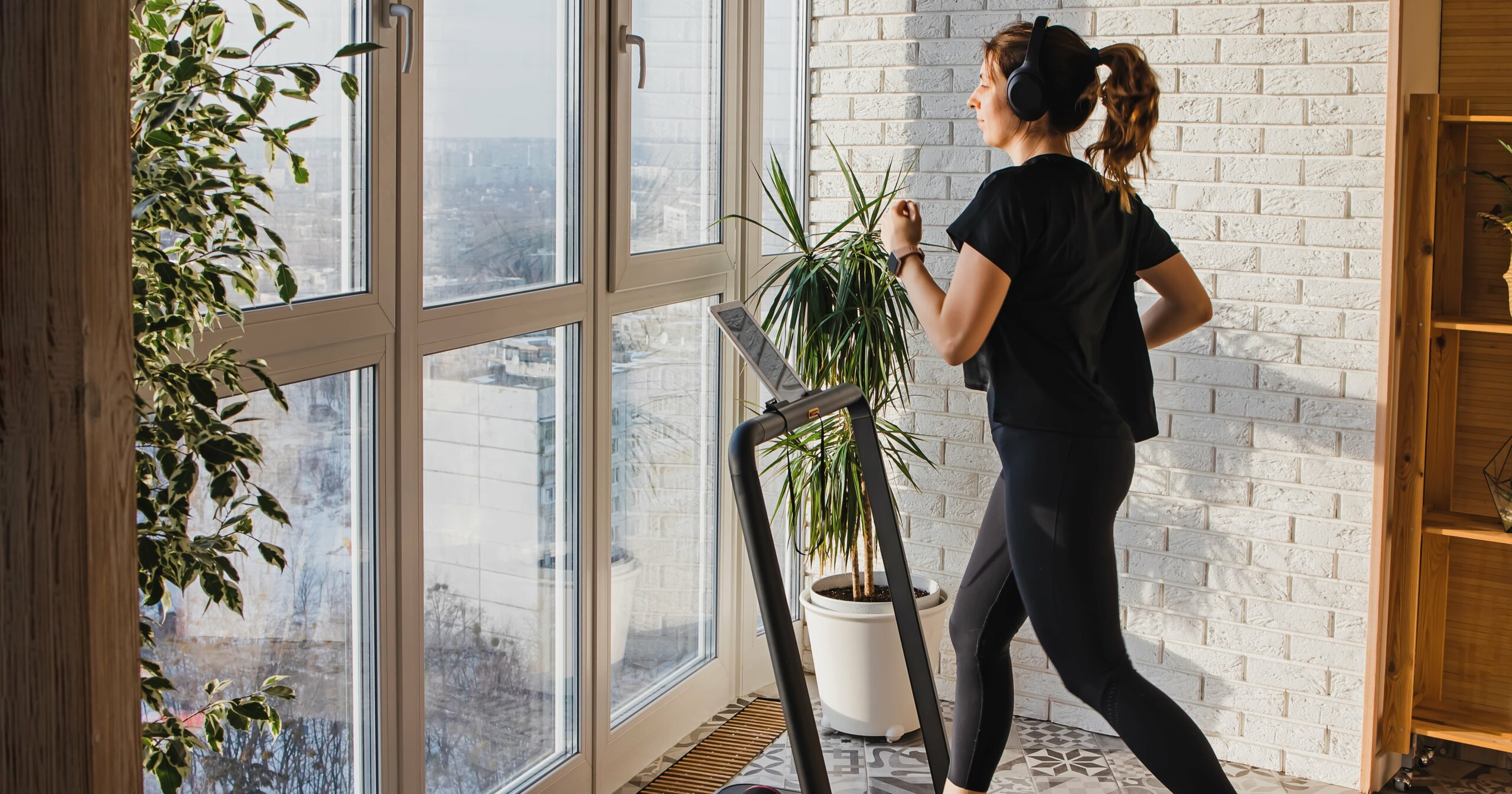When the temperature is just about freezing outside, it’s natural to want to cozy up by the fire or warm up with your trusty heating pad or blanket. While the warmth it provides is very much welcomed during chilly times, there’s a rising concern about their use. Apparently, too much heating pad time can cause “toasted skin” syndrome.
Knowing that your heating pad could be causing a skin condition isn’t the news you want to hear during the winter season. If you have one, you know just how convenient it is when you’re experiencing menstrual cramps, are sore from your new Pilates class, or when you’re cold and need to warm up in bed after doing your nighttime skin-care routine. However, the prolonged use of heat on skin can lead to some uncomfortable and lasting side effects.
TikToker Alexandra Sedlak shared her experience with toasted skin syndrome, which arose unexpectedly. “Do you know what happens if you repeatedly sit in front of an electric space heater with your back to it? I would love to show you, but if I did, this video would get taken down,” she said. “But basically, you will turn into a marshmallow.”
If you’re concerned about your accelerated use of heating pads, think you may have toasted skin syndrome, and want to prevent skin discoloration and other side effects, we got you. Keep reading for everything you need to know about the condition straight from experts.
Experts Featured in This Article
Kristina Collins, MD, FAAD, is a double board-certified dermatologist and surgeon.
Alexandra Bowles, MD, is a board-certified dermatologist at MONA Dermatology.
What Is Toasted Skin Syndrome?
Toasted skin syndrome, also known as erythema ab igne (EAI), is a skin condition characterized by “a net-like reddish-brown discoloration caused by repeated exposure to moderate heat,” dermatologist and surgeon Kristina Collins, MD, FAAD, says.
Heating objects such as pads and hot water bottles, often used for pain relief, can create this condition when used directly on the skin for prolonged periods. But even surprising, unintentional sources of heat can cause it, as it can come from everyday devices. “Another common cause of erythema ab igne is resting your laptop on your lap or thighs for extended periods of time, as the heat generated from the device can similarly damage the skin,” Dr. Collins says.
The condition can cause your skin to look almost net-like with a pattern of discoloration on the skin. Usually, it will begin as a red rash but can turn brown as time passes, according to the National Institutes of Health. Toasted skin syndrome can occur anywhere on your body that comes in contact with heat for long periods of time, which is defined as more than 15-20 minutes.
What Causes Toasted Skin Syndrome?
When toasted skin syndrome occurs, Dr. Collins says it’s because “prolonged exposure to moderate heat that is not intense enough to cause burns leads to gradual damage to the skin’s blood vessels and an increase in melanin production.” She continues, “This cumulative heat exposure results in the characteristic pigmentation and changes in skin structure. Heating pads and laptops both deliver consistent heat to a localized area, which is why they are common culprits of this condition.”
And if you think it doesn’t sound serious, be warned: “Repeated heat exposure can damage the skin’s deeper layers,” says dermatologist Alexandra Bowles, MD. “Over time, it can result in visible discoloration, and in rare cases, an increased risk of skin cancer due to cellular changes caused by heat.”
How to Prevent Toasted Skin Syndrome
To avoid toasted skin syndrome, “it’s important to limit prolonged, direct contact between your skin and heat sources,” Dr. Bowles says. There are a few steps one can take to prevent getting toasted skin syndrome. Dr. Collins says the following are key steps in prevention:
For heating pads:
- Limit usage to no more than 15-20 minutes at a time.
- Always place a cloth or towel between the heating pad and your skin.
- Use the lowest effective heat setting.
For laptops:
- Avoid resting the laptop directly on your thighs; use a laptop desk, stand, or cushion.
- Take breaks and change positions frequently to prevent prolonged heat exposure to one area.
How to Treat Toasted Skin Syndrome
In mild cases of toasted skin syndrome, you’ll notice that the discoloration may fade on its own if the heat source is removed. “For more persistent or severe cases, a dermatologist may recommend treatments to help improve skin texture and pigmentation,” Dr. Bowles says. “Early consultation is key to preventing permanent damage.”
If you’re noticing signs of toasted skin syndrome, such as itching of the skin, redness, or discoloration, Dr. Collins says the following may be able to help:
- Remove the heat source immediately – “Stop using heating pads directly on the skin or resting laptops on your thighs,” she says.
- Apply soothing creams – Use a moisturizer or aloe vera to calm the skin.
- Use topical treatments – A dermatologist may recommend a retinoid or hydroquinone-based cream to help lighten pigmentation.
- Protect the skin – Apply sunscreen daily to prevent further pigmentation.
- Seek professional advice – If your discoloration persists or worsens, “consult a dermatologist. In severe cases, laser therapy may be necessary to correct pigmentation,” Dr. Collins says.
While erythema ab igne is often benign, Dr. Collins says repeated heat exposure can potentially “increase the risk of precancerous changes, so addressing it promptly is important.”
If you’re concerned about getting toasted skin syndrome while using your heating pad, don’t fret. Using it in the expert-recommended 15-20-minute increments will allow you to enjoy all the benefits that come with these magical warming devices without potentially harming your skin. If you’re currently experiencing side effects of toasted skin syndrome, contact your dermatologist, as they may be able to help reduce symptoms.
Sydney Wingfield has been a freelance writer in the beauty and wellness space for six years. She has written for Women’s Health, Marie Claire, Glamour, and other publications and loves to cover all things skin care, makeup, and hair.




